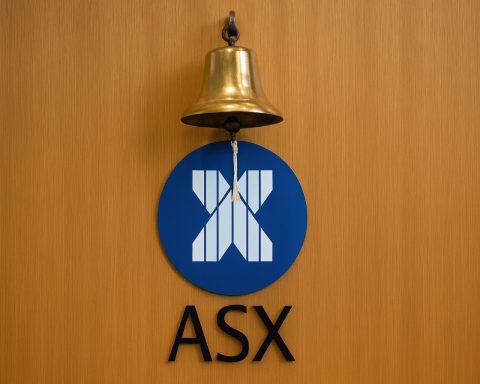As U.S. markets head into the session for Monday, November 24, 2025, Peloton Interactive Inc. (NASDAQ: PTON) is starting the week trading around $6.45 per share, based on Friday’s official close on November 21. [1]
After a multi-year slide from its pandemic highs, Peloton stock now sits more than 40% below its 52‑week peak of $10.90, but well above its recent 12‑month low of $4.63. [2] The question for investors “today” is less about where the stock has been and more about whether Peloton’s turnaround story — built on cost cuts, subscriptions, and AI — can justify a recovery from these levels.
Below is a detailed look at the latest price action, financials, strategy, and risk factors shaping Peloton stock right now.
Peloton stock price today: where PTON stands heading into November 24
- Last close (Nov 21, 2025): $6.45
- After-hours (Nov 21, 2025): ~$6.47
- Market cap: roughly $2.7 billion [3]
- 52‑week range: $4.63 – $10.90 [4]
Friday’s close at $6.45 came after a bruising stretch for Peloton shareholders:
- On Monday, November 17, the stock dropped 4.55% to $7.14. [5]
- On Thursday, November 20, Peloton slid another 7.12% to $6.39, marking its fourth straight day of losses and leaving it about 41% below its 52‑week high. [6]
- Data from Fintel and Finviz show the share price is down around the mid‑teens percentage range over the last week, with performance over the past month similarly negative. [7]
Trading volume has been elevated on recent down days and continues to run above its 50‑day average, signaling heightened investor activity and volatility. [8]
In short, Peloton enters the November 24 session as a high‑beta, heavily traded turnaround stock that has given back a meaningful chunk of its recent post‑earnings gains.
Earnings backdrop: from surprise profit to a modest Q1 beat
Peloton’s share price today is being driven less by pandemic nostalgia and more by what the company has done in the last few quarters.
Q4 FY2025: first profit in years and a big cost reset
In fiscal Q4 2025, Peloton shocked the market by:
- Delivering GAAP earnings of $0.05 per share, versus expectations for a $0.05 loss.
- Generating revenue of about $607 million, topping estimates and still only modestly down year‑over‑year. [9]
- Producing roughly $324 million in free cash flow, while reducing net debt by more than 40% year‑over‑year. [10]
Alongside that profit, Peloton announced a restructuring plan aimed at at least $100 million in annual run‑rate savings by the end of FY26, driven by layoffs, reduced indirect spending, and relocating some roles. [11]
Management also laid out ambitious FY26 targets:
- Revenue of $2.4–$2.5 billion
- 51% gross margin
- $400–$450 million in adjusted EBITDA
- The company’s first-ever positive full‑year operating income [12]
Those targets are central to the current Peloton bull case.
Q1 FY2026 (reported November 6, 2025): small beat, shrinking top line
The momentum carried into Q1 FY2026, reported on November 6, 2025:
- EPS: $0.03 vs. $0.01 expected
- Revenue: about $551 million, down 6% year‑over‑year but above both guidance and consensus (~$541 million). [13]
- Trailing EPS remains negative (~‑$0.28), and Wall Street still expects a full‑year loss, albeit smaller than in prior years. [14]
On the subscriber side, Peloton ended Q1 with roughly 2.73 million paid Connected Fitness subscriptions, down around 6% year‑over‑year but slightly ahead of guidance, suggesting churn is painful but manageable. [15]
Taken together, the last two quarters paint a picture of a company that:
- Has proven it can be profitable for individual quarters,
- Is still facing declining revenue and a shrinking subscriber base, and
- Is trying to grow into ambitious FY26 profitability goals.
Turnaround strategy: cost cuts, subscriptions and AI at the core
New CEO Peter Stern (formerly of Apple and Ford) took over in January 2025 and has been explicit: Peloton is no longer a “hardware growth at any cost” story. [16]
Four strategic pillars
According to Peloton’s recent earnings communications and independent reporting, the long‑term strategy rests on four pillars: [17]
- Improve Member Outcomes – Lead in cardio (bike, tread, row) while expanding into strength, mobility, mental health, sleep, and recovery.
- Meet Members Everywhere – Use micro‑stores, refurbished equipment, and third‑party retail (Costco, Lululemon, etc.) to broaden distribution. [18]
- Members for Life – Push loyalty programs, better onboarding, Teams/social features, and gamification to keep churn low. [19]
- Business Excellence – Align pricing with real costs, aggressively manage expenses, and execute the $100 million cost‑reduction plan. [20]
The subscription pivot
Peloton’s financial engine is now its subscription business, not bikes and treadmills:
- In 2025, subscriptions accounted for roughly 60%+ of total revenue, versus a minority share in the pandemic era. [21]
- Subscription gross margins are reported near 68%, compared with low‑teens margins for hardware. [22]
- Churn has dropped to around 1.4% in some recent quarters, helped by broader content and multi‑discipline engagement. [23]
The strategic goal is clear: turn Peloton into a high‑margin, recurring‑revenue fitness platform that happens to sell hardware, not the other way around.
AI as a differentiator
Peloton is also leaning heavily into AI‑driven features: [24]
- Personalized training plans that adapt to each member’s performance and goals.
- AI‑powered subtitles and translations to expand the global addressable market.
- AI tools for internal operations (like customer support note‑taking) to cut costs and improve service.
This AI push culminated in the “Peloton IQ” and cross‑training product revamp in fall 2025, where the company rolled out updated hardware alongside AI coaching features and pricing changes. [25]
The bet is that sticky, personalized experiences will offset slowing hardware demand and justify premium subscription pricing over time.
Risk profile: high short interest, insider selling, and ongoing losses
Despite real progress, Peloton remains a controversial stock, and the market’s skepticism shows up clearly in the data.
Heavy short interest
As of October 31, 2025, Peloton had:
- 73.69 million shares sold short
- Roughly 18.3% of its public float shorted
- A short interest ratio of 7.9 days to cover, based on average trading volume [26]
That is elevated by large‑cap standards, signaling many investors are actively betting against the stock — but it also means any positive surprise could fuel a sharp short‑covering rally.
Insider selling and mixed sentiment
Recent SEC filings show notable insider selling:
- Director Jennifer Cunningham Cotter sold 131,495 shares on November 20 at an average price of $6.64, reducing her stake by more than half.
- In total, she has sold over 500,000 shares across four transactions since September, at prices between roughly $7.22 and $8.05. [27]
Insider selling does not automatically mean insiders are bearish — it can reflect diversification or personal cash needs — but given Peloton’s fragile investor confidence, such moves tend to attract attention.
On Wall Street:
- The consensus rating is “Hold.”
- MarketBeat data shows 8 Buy, 7 Hold, and 1 Sell ratings.
- The average 12‑month price target is about $9.86, implying significant upside from current levels, but targets can change quickly in volatile names like Peloton. [28]
Still unprofitable on a full‑year basis
Even after the Q4 and Q1 beats, Peloton isn’t “fixed” yet:
- For FY2025, Peloton generated about $2.49 billion in revenue but still reported a net loss of roughly $119 million and negative equity of about $414 million on its balance sheet. [29]
- Analysts still project negative EPS for the current fiscal year, though the loss is shrinking. [30]
That combination — shrinking losses but no clear sustained profitability yet — keeps PTON squarely in “turnaround” territory rather than in the bucket of steady compounders.
Bull case for Peloton stock today
Investors who are optimistic about Peloton stock heading into November 24 typically highlight:
- Improving profitability trends
- High‑margin subscription model
- Subscriptions are now the majority of revenue with far higher margins than hardware. [33]
- Cost discipline and restructuring
- $100 million in targeted run‑rate savings, plus earlier waves of cuts that have already reduced operating expenses meaningfully. [34]
- AI‑driven product differentiation
- Personalized training, multi‑discipline programs, and global language support help make Peloton more than “just a bike company,” potentially improving churn and pricing power. [35]
- Valuation vs. growth potential
- After a 90%+ drawdown from its 2021 peak, Peloton trades at a modest price‑to‑sales multiple (~1x) with a credible path to higher profitability if management executes. [36]
For bulls, Peloton is a high‑risk, high‑reward recovery name with leverage to both operating execution and sentiment shifts (including potential short squeezes).
Bear case and key risks to watch
Skeptics of PTON stock point to several unresolved issues:
- Declining revenue and subscribers
- Revenue is still contracting year‑over‑year, and connected fitness subscriptions fell about 6% in the latest quarter, despite all the new features and AI tools. [37]
- Structural questions about the model
- The pandemic boost is long gone, and the broader fitness landscape has shifted back toward gyms, cheaper at‑home options, and competing digital platforms.
- Balance sheet and negative equity
- While liquidity is solid today, Peloton still carries negative equity and a history of large losses — not an ideal mix if growth stalls again. [38]
- Execution complexity
- Management must juggle AI investments, hardware updates, international expansion, B2B/commercial growth, and deep cost cuts simultaneously — a tall order for any company.
- High short interest and volatility
- With nearly one‑fifth of the float sold short, Peloton is prone to violent price swings in both directions, which can be emotionally and financially challenging for shareholders. [39]
In other words, Peloton remains far from “de‑risked.” A misstep on guidance, a disappointing earnings print, or negative news (for example, around product recalls or hardware demand) could drive steep downside.
What to watch in PTON this week and beyond
For investors tracking Peloton stock around November 24, 2025, several themes are likely to drive the next moves:
- Price action around $6–$7: Does PTON stabilize around current levels, or does selling pressure push it closer to its 12‑month low?
- Follow‑through from Q1 FY26: Analysts and traders will continue digesting the latest earnings, watching whether subscription and churn trends improve or deteriorate. [40]
- Updates on restructuring progress: Any commentary on cost savings, headcount reductions, or margin improvements will influence perceptions of the FY26 targets. [41]
- Short‑interest and sentiment shifts: Changes in short interest or analyst ratings could quickly move the stock given its relatively small size and high volatility. [42]
- Next earnings catalyst: MarketBeat currently estimates Peloton’s next earnings date around February 5, 2026 (Q2 FY26), which will be the next major checkpoint on the turnaround path. [43]
Bottom line
As of today’s session for November 24, 2025, Peloton Interactive stock represents a leveraged bet on a complex turnaround:
- The financials are clearly better than they were a year or two ago.
- The business model is leaning into high‑margin, recurring revenue and AI‑enhanced engagement.
- Yet the company remains unprofitable on a full‑year basis, with declining revenue, high short interest, and meaningful execution risk.
For investors, Peloton is not a simple “pandemic darling comeback” story. It’s a nuanced, high‑volatility situation where both upside and downside are very real.
This article is for information and education only and is not financial advice. Anyone considering PTON (or any stock) should evaluate their own risk tolerance, time horizon, and diversification, and consider consulting a qualified financial professional before making investment decisions.
References
1. www.marketbeat.com, 2. www.marketwatch.com, 3. www.marketbeat.com, 4. www.marketwatch.com, 5. www.marketwatch.com, 6. www.marketwatch.com, 7. fintel.io, 8. www.marketwatch.com, 9. www.investing.com, 10. www.investing.com, 11. www.investopedia.com, 12. www.pelobuddy.com, 13. www.marketbeat.com, 14. www.marketbeat.com, 15. investor.onepeloton.com, 16. www.reuters.com, 17. www.pelobuddy.com, 18. www.reuters.com, 19. www.pelobuddy.com, 20. www.investopedia.com, 21. www.ainvest.com, 22. www.ainvest.com, 23. www.ainvest.com, 24. www.ainvest.com, 25. finviz.com, 26. www.marketbeat.com, 27. www.marketbeat.com, 28. www.marketbeat.com, 29. en.wikipedia.org, 30. www.marketbeat.com, 31. www.investing.com, 32. www.investing.com, 33. www.ainvest.com, 34. www.investopedia.com, 35. www.ainvest.com, 36. finviz.com, 37. www.marketbeat.com, 38. en.wikipedia.org, 39. www.marketbeat.com, 40. www.marketbeat.com, 41. www.investopedia.com, 42. www.marketbeat.com, 43. www.marketbeat.com









